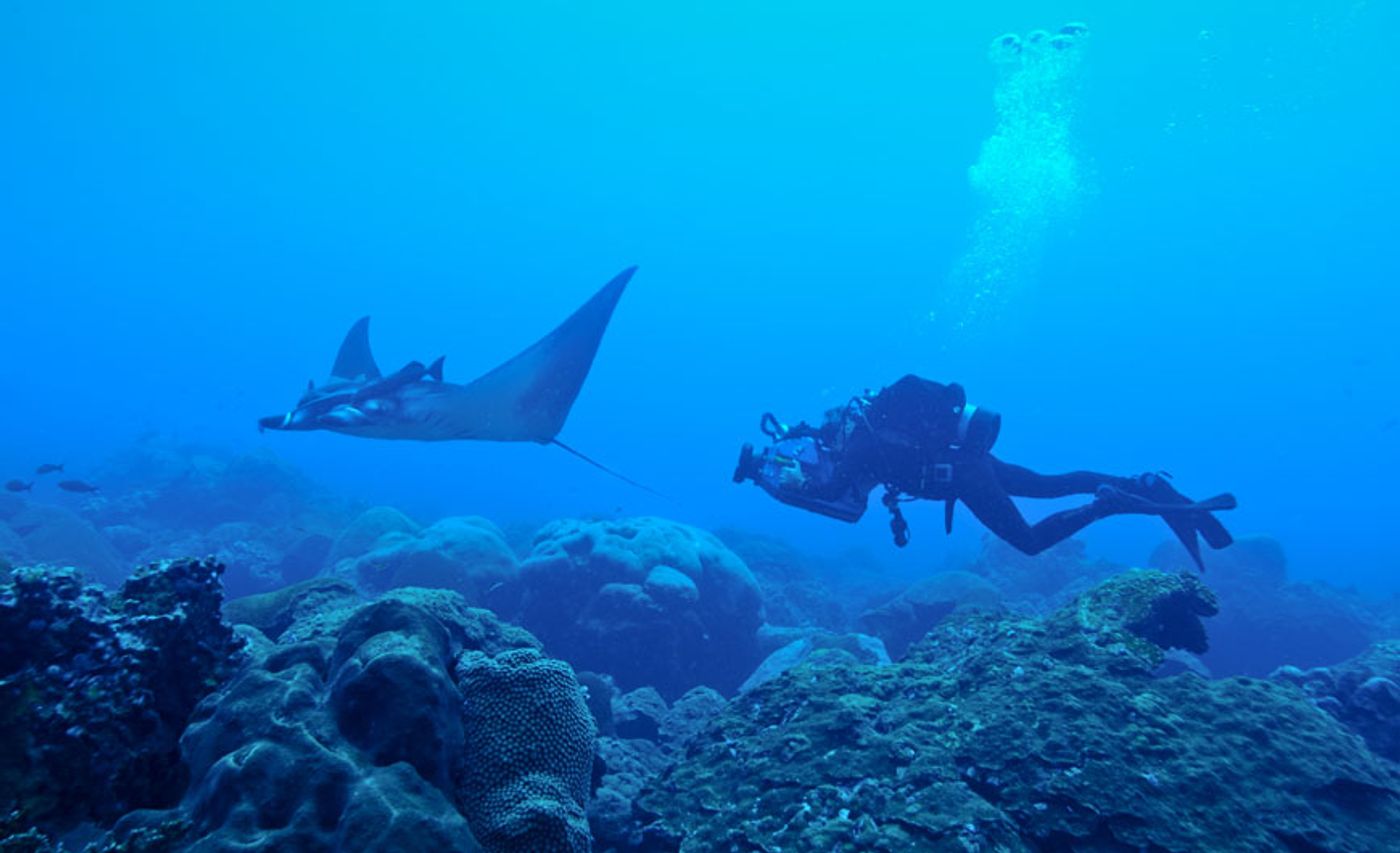First-Known Manta Ray Nursery Discovered
Researchers from both the University of California, San Diego and National Oceanic and Atmospheric Administration (NOAA) stepped forward this week with some exciting news: they’ve discovered the first-known manta ray nursery in the wild.
Image Credit: G.P. Schmahl/FGBNMS
Citing a paper published in the journal Marine Biology that describes the findings, the nursery exists within the NOAA-managed Flower Garden Banks National Marine Sanctuary in the North-western Gulf of Mexico, just off the coast of Texas.
The discovery of this discreet little manta ray nursery is more critical than one might think. Researchers have attempted to solve many biological and ecological mysteries surrounding juvenile manta rays for some time, and the recently-found nursery looks like a promising place to begin scientific research that could explain said puzzles.
"The juvenile life stage for oceanic mantas has been a bit of a black box for us since we're so rarely able to observe them," explained study lead author Joshua Stewart from the Scripps Institution of Oceanography at the University of California, San Diego.
"Identifying this area as a nursery highlights its importance for conservation and management, but it also gives us the opportunity to focus on the juveniles and learn about them. This discovery is a major advancement in our understanding of the species and the importance of different habitats throughout their lives," he continued.
Related: A better understanding of sharks reduces fear of them, study finds
Juvenile manta rays aren’t known for traveling the sea with their adult counterparts, and to make matters worse, locating them for scientific study can be a real hassle. Fortunately, the newfound nursery is close to the coast and easy for scientists to access.
25 years’ worth of existing data amassed by sanctuary officials unveiled how 95% of manta rays visiting the nursery location were juveniles rather than adults. Furthermore, the nursery seems to support more than one manta ray species.
Given that the nursery exists within a protected wildlife area, it seems obvious to note the importance of protected marine areas for maintaining robust conservation techniques across the globe. Protected marine areas don’t receive as much human interaction as other parts of the ocean, so the undisturbed animals in these parts offer a front-row view into their unique lifestyles.
"Nowhere else in the world has a manta ray nursery area been recognized-which heightens the importance of the sanctuary for these pelagic species," added George P. Schmahl from the Flower Garden Banks National Marine Sanctuary.
"The discovery of the sanctuary as a nursery area for the species raises many more questions, some of which we can hopefully start studying with Josh Stewart and other partners."
Related: Newly-devised manta ray-like robot is soft to the touch
It will undoubtedly be interesting to see what researchers might learn about manta rays as they begin studying the nursery. If all goes well, the findings could support conservation efforts.









